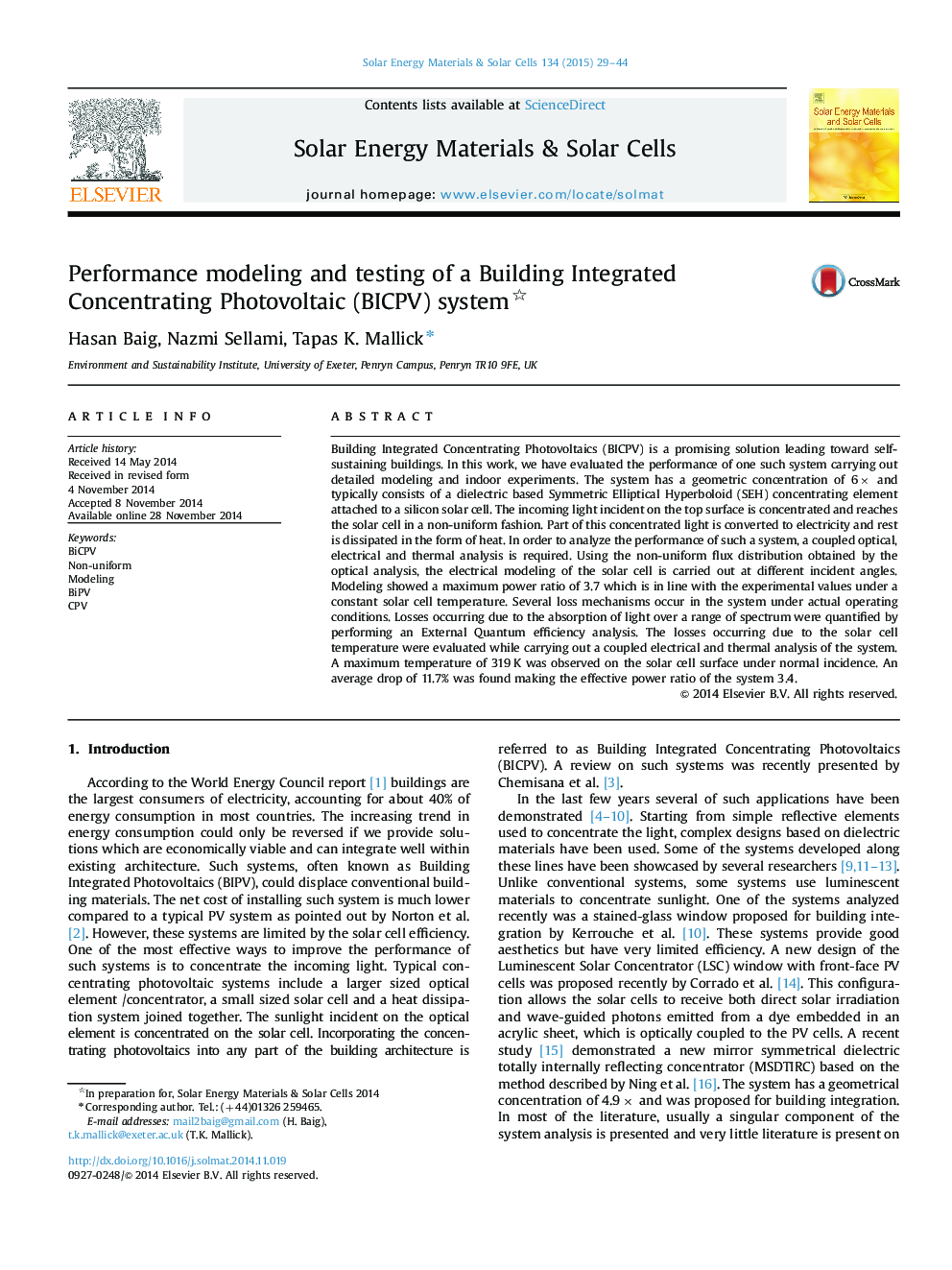| Article ID | Journal | Published Year | Pages | File Type |
|---|---|---|---|---|
| 77888 | Solar Energy Materials and Solar Cells | 2015 | 16 Pages |
•This research article presents the following key points.•Optical, Thermal and Electrical analysis of a novel 3D dielectric based building integrated concentrating photovoltaic system.•Indoor characterization of the system.•Impact of temperature profile on the overall performance.•Quantification of losses occurring in the system.
Building Integrated Concentrating Photovoltaics (BICPV) is a promising solution leading toward self-sustaining buildings. In this work, we have evaluated the performance of one such system carrying out detailed modeling and indoor experiments. The system has a geometric concentration of 6× and typically consists of a dielectric based Symmetric Elliptical Hyperboloid (SEH) concentrating element attached to a silicon solar cell. The incoming light incident on the top surface is concentrated and reaches the solar cell in a non-uniform fashion. Part of this concentrated light is converted to electricity and rest is dissipated in the form of heat. In order to analyze the performance of such a system, a coupled optical, electrical and thermal analysis is required. Using the non-uniform flux distribution obtained by the optical analysis, the electrical modeling of the solar cell is carried out at different incident angles. Modeling showed a maximum power ratio of 3.7 which is in line with the experimental values under a constant solar cell temperature. Several loss mechanisms occur in the system under actual operating conditions. Losses occurring due to the absorption of light over a range of spectrum were quantified by performing an External Quantum efficiency analysis. The losses occurring due to the solar cell temperature were evaluated while carrying out a coupled electrical and thermal analysis of the system. A maximum temperature of 319 K was observed on the solar cell surface under normal incidence. An average drop of 11.7% was found making the effective power ratio of the system 3.4.
